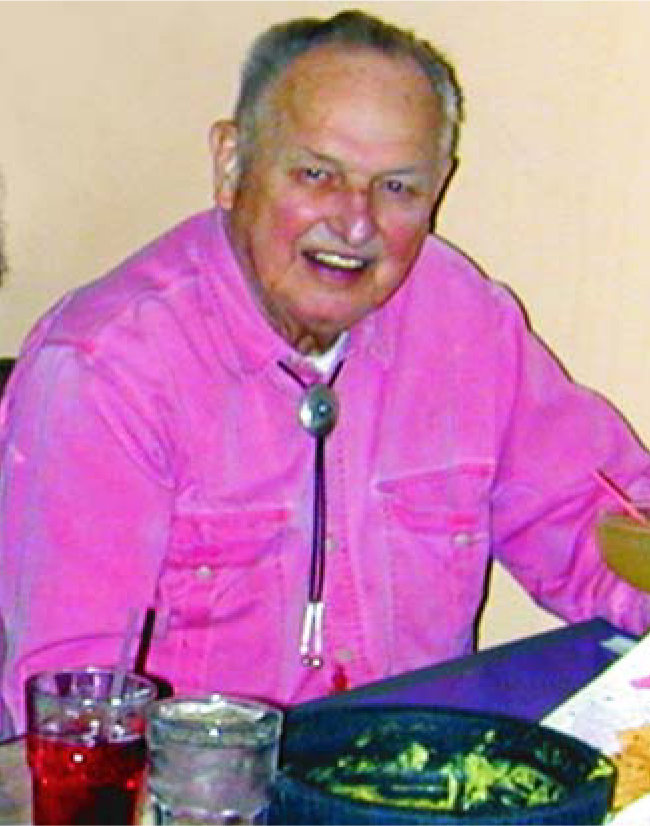James Arthur Krumhansl
DOI: 10.1063/1.1995758
James Arthur Krumhansl, a distinguished materials physicist, died on 6 May 2004 in Lebanon, New Hampshire, of a massive stroke. Jim made countless contributions to physics, not only as a researcher but also as an adviser and policymaker for numerous educational, governmental, industrial, and professional institutions.
Jim was born on 2 August 1919 in Cleveland, Ohio. He received his BS in electrical engineering from the University of Dayton in 1939, his MS in physics from Case Institute of Technology (now Case Western Reserve University) in 1940, and his PhD in physics from Cornell University in 1943 on the topic of the microwave cavity klystron.
In 1943, Jim began his educational career as a physics instructor at Cornell. He left to work as an industrial physicist for the US Navy from 1944 to 1946 before joining Brown University as an assistant professor of physics and applied mathematics. He left Brown in 1948 as an associate professor to return to Cornell, where he became a full professor in 1959. A year later, he was directing the university’s laboratory of atomic and solid-state physics (LASSP). He was not only instrumental in the actual design of LASSP and its staffing, but during his four-year tenure as director helped mentor it through its golden era that was capped by its remarkable impact on physics work done during the 1970s that led to Nobel Prizes in the 1980s and 1990s. In 1981, Jim was named Cornell’s Horace White Professor of Physics.
Intertwined with Jim’s academic career were several important government and industrial positions. During 1954–59, he was a member of various advisory committees for the US Atomic Energy Commission and concurrently was briefly the associate director of corporate research of National Carbon–Union Carbide Corp (1954–56). Jim took pride in cofounding, with Robb Thompson, the Materials Research Council for the Department of Defense’s Advanced Research Projects Agency around 1960. Jim was a senior fellow of Los Alamos National Laboratory (1975–79). Most notably, he was the assistant director for mathematics, physical sciences, and engineering for NSF from 1977 to 1979. For that tenure, he received the foundation’s distinguished service award for program development in microscience and computer systems. During that same period, he was a member of the board of directors of Allied Chemical Corp. He also spent many years on Allied’s science advisory board (1979–87).
Jim’s service to the physics community was equally impressive. He was the editor of the Journal of Applied Physics (1958–64), an associate editor of Solid State Communications (1963–70), and an associate editor of Reviews of Modern Physics (1968–73). From 1974 to 1977, he was the editor of Physical Review Letters and transformed many of its structures and procedures into those still used today. In 1989, he began his post as president of the American Physical Society. As president in the years following the massacre at Tiananmen Square, he became well known for his support of visa and immigration reforms for Chinese students, postdoctoral associates, and visiting scholars. He also helped usher the move of APS headquarters from New York to College Park, Maryland.
Never one to shy away from taking strong principled stands on major scientific issues, Jim testified before Congress in 1987 against the construction of the Superconducting Super Collider because its expense would divert funding from many other important and promising areas of research. He also was a proponent of human rights. In addition to supporting Chinese scholars, for example, he also vehemently opposed the imprisonment, without any charges filed, of an Argentine physicist in Argentina during 1975–77.
Jim characterized his own research style as that of a gadfly. Peripatetic would be more fitting. Through his scientific endeavors, he traveled through communication and information theory, applied mathematics, theoretical condensed matter physics, materials science, nonlinear physics, statistical mechanics, and biophysics. He had a special talent for seeing the connections between fields and linking workers across those fields. For example, he advocated the notion of phonons to metallurgists and, with Robert Schrieffer, the concept of solitons to materials scientists. His contributions (with Schrieffer) to the statistical mechanics of structural phase transitions and (with Gerhard Barsch) to martensitic twinning without dislocations are particularly noteworthy. He had a strong belief in the inherent unity in science. Accordingly, he was an advocate of broader training for physicists. Cornell established in 2004 the J. A. Krumhansl Postdoctoral Fellowship, which, very much in line with Jim’s style, offers an independent and unrestricted choice of theoretical research directions for the selected candidate.
Jim remained on the Cornell faculty until his retirement in 1990, and then held adjunct professorships at the University of Massachusetts Amherst and at Dartmouth College. One month before his death, he delivered his last invited lecture, on multiscale modeling of materials and biological matter, at the Dynamic Energy Landscapes and Functional Systems Conference in Santa Fe, New Mexico. A memorial symposium was held at Los Alamos in January 2005 to thank him for his service to the laboratory and to celebrate his remarkable life and its impact on physics and science policy. He is remembered by his students, postdoctoral associates, colleagues, and collaborators for his quick mind, humor, and unlimited energy.

James Arthur Krumhansl

More about the Authors
Alan R. Bishop. 1 Los Alamos National Laboratory, Los Alamos, New Mexico, US .
James E. Gubernatis. 1 Los Alamos National Laboratory, Los Alamos, New Mexico, US .
Avadh Saxena. 1 Los Alamos National Laboratory, Los Alamos, New Mexico, US .
